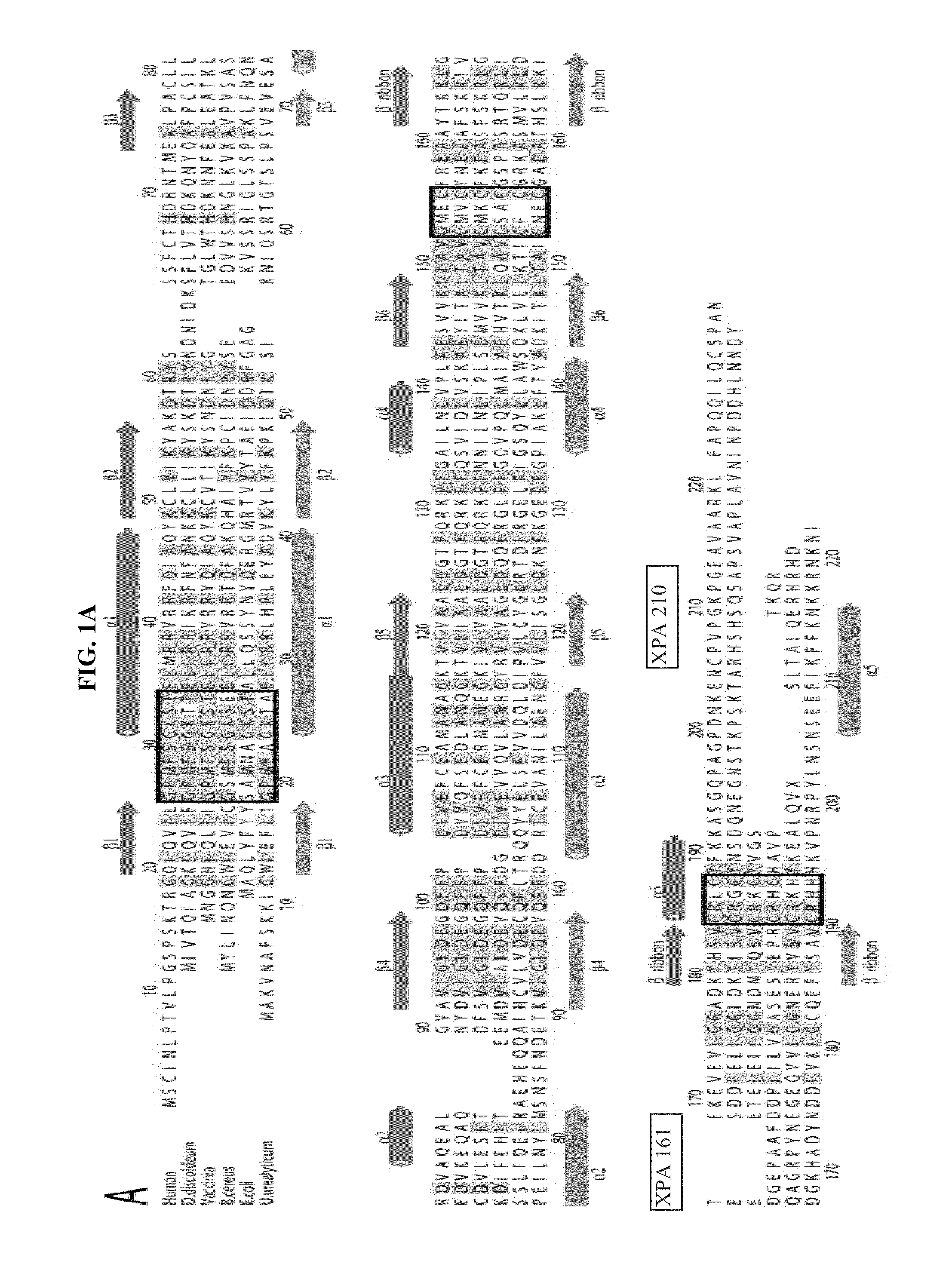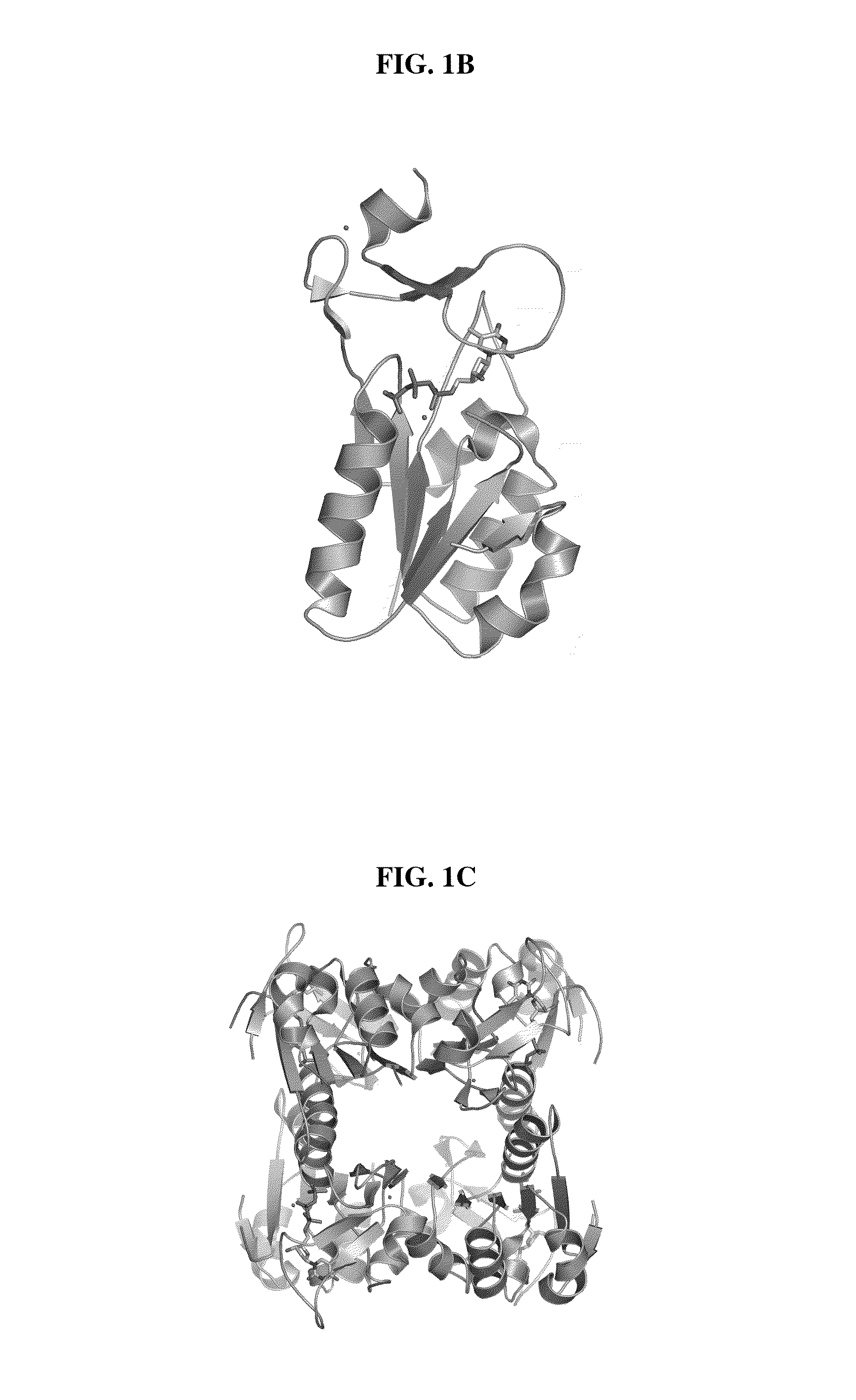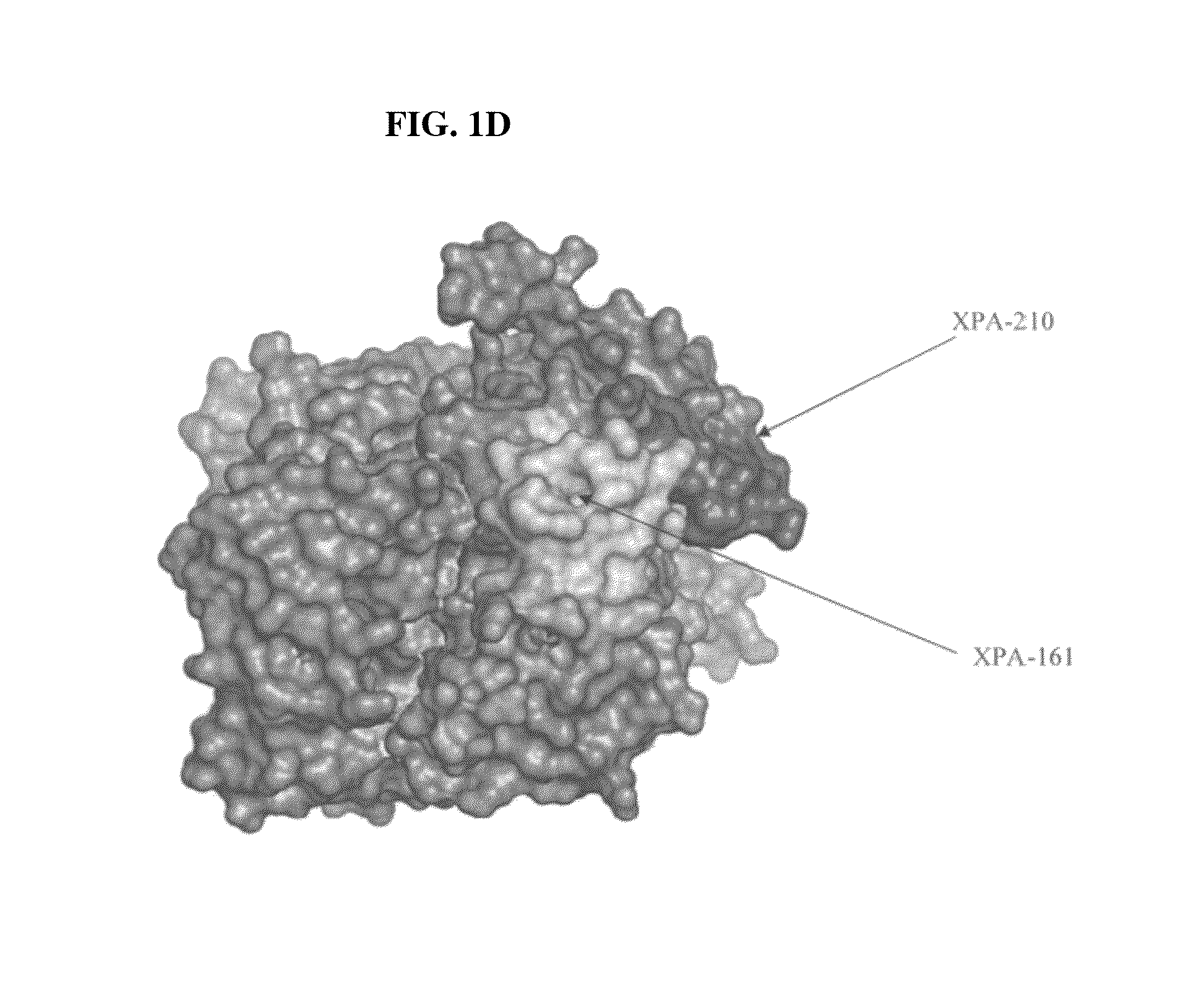Exposed proliferation-related peptides, ligands and methods employing the same
a proliferation-related peptide and proliferation-related technology, applied in the field of thymidine kinase 1 (tk1) derived peptides, ligands, can solve the problems of limited use, relative complexity, and limitation of their application to hematologic malignancies, and achieve the effect of reducing the number of tk1 derived peptides
- Summary
- Abstract
- Description
- Claims
- Application Information
AI Technical Summary
Benefits of technology
Problems solved by technology
Method used
Image
Examples
example 1
Preparation of XPA161 and XPA210 Antibodies
[0036]Immunization: Two peptides representing amino acids 161 to 183 (AYTKRLGTEKEVEVIGGADKYHS-NH2) (SEQ ID NO: 1), referred to as XPA161 herein, and amino acids 195 to 225 (GQPAGPDNKENCPVPGKPGEAVAARKLFAPQ-OH) (SEQ ID NO: 3), referred to as XPA210 herein, of the human TK1 protein sequence (21) were selected as antigens. In case of XPA161, a cysteine residue was added to the N-terminal Alanine residue. This 24 mer peptide was coupled to KLH or BSA using the free sulfyryl group and a bifunctional crosslinker 3-maleimidobenzoic acid N-hydroxysuccinimide ester (MBS). XPA210 was coupled to KLH using glutaraldehyde. The peptides (>96% pure) were synthesized and the cross linking performed by NeoMPS Inc., San Diego, Calif. as described (see www.neompls.com). Approximately 100 μg peptide complex was re-suspended in 500 μl PBS (pH 7.2) and mixed with an equal volume of complete Freund's adjuvant (Sigma, St. Louis, USA). The mixture was injected into ...
example 2
Immunoprecipitation Reactions with XPA210 IgY and XPA161 IgY
[0039]Preparation of cell extracts: Human lymphoblastoid cells Cem wild-type (CEM TK1+), and CEM TK1− cells, selected for bromodeoxyuridine resistance were cultured as described (24). Cells were harvested by centrifugation and the cell pellets (40×106 / ml) were lysed using a buffer containing 10 mM Tris-HCl, pH 7.6, 13.7 mM NaCl and 1 mM phenylmethylsulfonyl fluoride (PMSF), 0.25% NP-40 for 30 min at 4° C., followed by centrifuging at 16,000×g for 10 mM at 4° C. The supernatant was stored at −80° C. before use.
[0040]Immunoprecipitation: To test if the antibodies inhibited the activity of human TK1, immunoprecipitation was performed as previously described (12), with slight modifications. To extracts from CEM TK1+ and CEM TK1− cells (containing 250 μg of protein), 2 μg of the purified XPA161 IgY antibody or 1 μg of XPA210 IgY were added to 50 μl TBS buffer, containing 1 mg / ml BSA, 1 mM PMSF. These solutions were incubated for...
example 3
PAGE, SDS / PAGE and Enhanced Chemiluminescence (ECL) Western Blotting
[0042]Native-PAGE (NOVEX, Invitrogen Living Science, Sweden) was used to separate the native tetrameric form of TK1, followed by ECL immuno blotting using the purified anti-TK1, XPA161 and XPA210 IgY antibodies. Twenty μg protein from CEM TK1+ and CEM TK1− cell extracts were added to an equal volume of a non denaturing sample buffer (125 mM Tris-HCl, pH 8.8, 137 mM NaCl, 20% glycerol) and then directly applied to a 4-10% gradient native-PAGE gel. SDS-PAGE gels were used to separate and detect the monomeric 25 kDa form of the TK1 polypeptide in these cell extracts using recombinant human TK1 as positive controls (2, 1, 0.5 ng TK1, respectively). Forty μg of CEM TK1+ and TK1− proteins were analyzed on 12% gels after denaturation in SDS sample buffers (12). Electrophoresis was performed according to the manufacturer's protocol (Bio-Rad Inc). After electrophoretic transfer of proteins to the PVDF membrane, they were blo...
PUM
| Property | Measurement | Unit |
|---|---|---|
| molecular weight | aaaaa | aaaaa |
| molecular weight | aaaaa | aaaaa |
| molecular weight | aaaaa | aaaaa |
Abstract
Description
Claims
Application Information
 Login to View More
Login to View More - R&D
- Intellectual Property
- Life Sciences
- Materials
- Tech Scout
- Unparalleled Data Quality
- Higher Quality Content
- 60% Fewer Hallucinations
Browse by: Latest US Patents, China's latest patents, Technical Efficacy Thesaurus, Application Domain, Technology Topic, Popular Technical Reports.
© 2025 PatSnap. All rights reserved.Legal|Privacy policy|Modern Slavery Act Transparency Statement|Sitemap|About US| Contact US: help@patsnap.com



